- Set Clear Goals and Know Your Audience: Define SMART goals tied to business objectives and create detailed buyer personas using tools like Google Analytics and CRM data.
- Research and Plan: Analyse competitors, perform keyword research, and build a content calendar to stay organised.
- Create and Share Content: Focus on quality over quantity. Use the right formats (blogs, videos, infographics) and distribute on platforms where your audience is active.
- Measure Results: Track metrics like traffic, engagement, conversions, and SEO performance using tools like Google Analytics.
- Update and Improve: Regularly review performance and refine your strategy based on data and feedback.
Quick Tip: Use a mix of owned, earned, and paid media to maximise your content’s reach. Regularly analyse what works and adapt your approach to stay relevant.
Step 1: Define Goals and Know Your Audience
Clear goals and a deep understanding of your audience are the backbone of a successful content strategy. Without these, even the best content can miss the mark.
Set Business Goals
Tie your content goals directly to your business objectives using the SMART framework: specific, measurable, achievable, relevant, and time-bound. This method keeps your efforts focused and aligned with your overall growth plan.
With SMART goals, you can:
- Monitor progress with ease
- Use resources efficiently
- Evaluate ROI
- Adjust strategies based on data
Research Your Audience
Understanding your audience is key to creating content that connects. Dive into their demographics, behaviors, and preferences to build accurate buyer personas.
Here’s how various data sources can help:
| Data Source | Purpose | Key Insights |
|---|---|---|
| Google Analytics | Analyse user behavior | Learn about demographics and patterns |
| Social Media Analytics | Track engagement | Identify content preferences and active times |
| CRM Data | Study customer info | Understand purchase history and preferences |
Zero in on their challenges, content interests, and decision-making habits. When your content aligns with their needs, it’s more likely to grab attention and drive action.
With your goals and audience clearly mapped out, you’re ready to build a content plan that works.
Step 2: Research and Plan Your Content
Creating content that resonates and delivers results starts with solid research and planning. By understanding your audience and analysing the market, you can craft content that meets their needs while carving out a space for your brand.
Analyse Competitors
Studying your competitors can help you identify what works, what doesn’t, and where opportunities lie.
| Focus Area | Key Insights | Tools |
|---|---|---|
| Content Types | Blog posts, videos, guides | Website audit |
| Distribution Channels | Social media, email, blogs | SEMrush, Ahrefs |
| Content Gaps | Missing topics, untapped formats | Content gap analysis |
| Performance Metrics | Engagement, rankings | Analytics tools |
Do Keyword Research
Keyword research connects your content to what your audience is searching for. Start with broad topics in your niche and refine them into specific, targeted keywords using tools like Google Keyword Planner or SEMrush. When choosing keywords, focus on:
- Search Volume: How often the keyword is searched each month.
- Competition: The difficulty level of ranking for the keyword.
- Relevance: How closely the keyword aligns with your content goals.
- User Intent: What users expect to find when they search for that term.
This ensures your content not only ranks but also fulfills user expectations.
Build a Content Calendar
A content calendar helps you stay organised and consistent by mapping out your topics, deadlines, and responsibilities.
Here’s how to create one:
1. List Priority Topics
Choose topics based on keyword research, audience interests, and seasonal trends.
2. Assign Resources
Decide who will create and review the content, and set realistic deadlines.
3. Plan Distribution
Match each piece of content to the right platforms and formats, ensuring it fits the audience and channel.
Use collaboration tools to keep your team on the same page, and review your calendar regularly to stay adaptable to new trends or changes in priorities.
Once your plan is ready, the next step is to create and share your content effectively.
Step 3: Create and Share Content
Develop Content
Producing great content starts with a clear plan that aligns with your business goals and addresses what your audience cares about. Always aim to deliver value and maintain consistent quality, no matter the format.
| Content Type | Key Considerations |
|---|---|
| Blog Posts | Use solid research, optimise for SEO, structure clearly, and craft engaging headlines. |
| Videos | Focus on strong visuals, concise messages, captions, and clear audio. |
| Infographics | Simplify complex ideas, use branded designs, and highlight data effectively. |
| Podcasts | Feature expert interviews, ensure professional audio quality, and share industry insights. |
Quality matters more than quantity. Each piece of content should serve a purpose, contributing to your business goals instead of wasting time and resources on less impactful efforts.
Choose Distribution Channels
Using multiple channels helps you reach more people and boost engagement. Combine owned media (like your website or blog), earned media (such as social shares or guest posts), and paid media (like ads or influencer partnerships). Customise your strategy to fit each channel’s strengths and your audience’s habits.
Here’s how to approach content distribution effectively:
- Channel Selection: Focus on platforms that generate the best engagement and conversions for your business.
- Content Optimisation: Adjust content for each platform while keeping your message consistent. Pay attention to:
- Platform-specific requirements
- Audience expectations
- Maintaining your brand’s voice
- Placing calls-to-action strategically
- Timing and Frequency: Post regularly during high-traffic times. Use a content calendar to stay organised but remain flexible for trends or timely updates.
Once your content is created and shared thoughtfully, it’s time to measure its success and fine-tune your strategy.
Step 4: Track and Measure Results
Once you’ve created and shared your content, it’s essential to track its performance to ensure your efforts are driving results that matter to your business.
Focus on Key Metrics
| Metric Type | What to Measure | Why It Matters |
|---|---|---|
| Traffic | Page views, unique visitors, time on page | Reflects how far your content is reaching and its appeal |
| Engagement | Comments, shares, likes, bounce rate | Shows how well your audience connects with the content |
| Conversions | Email signups, downloads, purchases | Ties content performance to business goals |
| SEO | Rankings, backlinks, organic traffic | Tracks how visible your content is in search results |
Dive Into Performance Data
Tools like Google Analytics offer detailed insights into how your content is performing. Schedule monthly reviews to stay on top of trends and conduct deeper quarterly analyses to spot patterns.
Key areas to examine:
- Audience behavior: Understand how visitors interact with your content – what they click, how long they stay, and where they drop off.
- Traffic sources: Pinpoint which platforms or campaigns are bringing in the most engaged users.
- Content performance: Identify which pieces are driving actions like signups, downloads, or purchases.
Don’t stop at Google Analytics. Social media and email engagement metrics can provide additional context for your content’s overall impact.
Turn Insights Into Action
Use the data to guide your next steps:
- Spot Trends: Look for recurring elements in your best-performing content and areas where audiences lose interest. Metrics like bounce rates and engagement can highlight what’s working and what’s not.
- Refine Distribution: Shift your focus to the channels delivering the best results, ensuring your resources are spent wisely.
Beanstalk Digital provides expertise in setting up analytics systems and interpreting data to fine-tune content strategies for better results.
Once you understand how your content performs, you’re ready to adjust and improve your approach for even greater success.
Step 5: Update and Improve Your Strategy
Keeping your content strategy effective means regular updates and adjustments. By analysing your content’s performance, you can refine your approach to stay aligned with your business goals and audience needs.
Assess What’s Working
Review your content performance every quarter, focusing on three main areas:
| Assessment Area | Key Questions | Action Items |
|---|---|---|
| Content Performance | What topics and formats perform best? | Focus more on high-performing topics and formats. |
| Distribution Channels | Which channels drive the most traffic or leads? | Prioritise resources for the most effective channels. |
| Business Impact | How does content drive revenue or awareness? | Create more content that supports proven success metrics. |
Make sure your content aligns with broader business goals and effectively engages your target audience.
Stay Current and Listen to Feedback
Stay relevant by keeping an eye on industry trends and gathering feedback from your audience. Use sources like:
- Comments on your posts and social media
- Conversations with customer support teams
- Surveys and direct audience feedback
- Patterns in how users engage with your content
Refine Your Approach: Use data to guide your decisions. For instance, if detailed guides are more popular than quick tips, focus your efforts on creating more in-depth content.
Beanstalk Digital suggests running content audits twice a year. These audits help you spot gaps, find new opportunities, and ensure your resources are being used effectively.
Balancing data insights with creative ideas is key. Let metrics guide your decisions, but don’t be afraid to try new approaches to keep your content fresh and engaging.
Conclusion: Steps to Build a Strong Content Strategy
Building a solid content strategy means looking at the entire process as a connected system. It takes careful planning and smart execution to achieve measurable results and support business growth.
The journey to effective content creation involves five key steps: setting clear goals, understanding your audience, planning content strategically, producing and sharing content, and analysing performance to improve over time.
Every piece of content should have a clear purpose and contribute to your overall objectives. To keep your strategy effective, focus on these three priorities:
- Align your content with both business goals and audience needs
- Use performance data to guide your decisions
- Stay responsive to industry changes and audience feedback
For businesses needing expert support, Beanstalk Digital offers tailored content strategies that integrate seamlessly with broader digital marketing plans. Their approach combines SEO knowledge and strategic content creation to help businesses grow and achieve measurable success.
Remember, a content strategy isn’t something you set and forget. It requires regular updates and adjustments. By balancing careful planning with hands-on execution, you can create content that resonates with your audience and drives your business forward.
Take the first step today – whether by crafting your strategy or working with a team of experts to fast-track your progress. Success in content creation is an ongoing effort, but following these steps will help you see real results.

